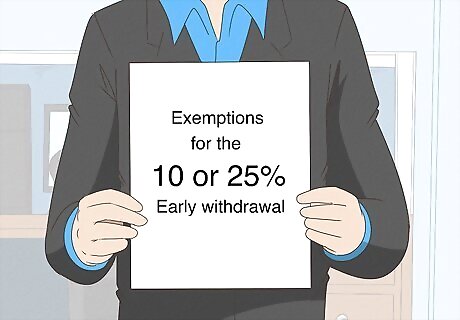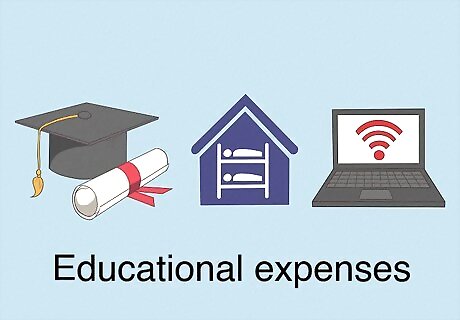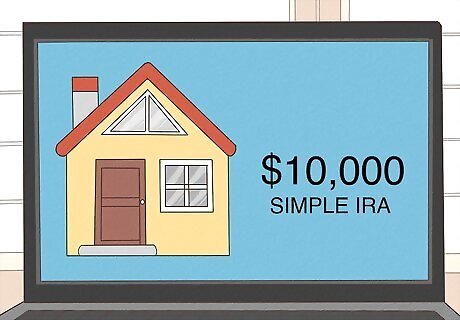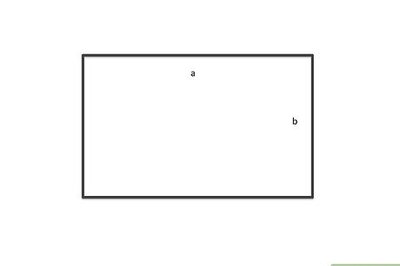
views
Withdrawal

Notify your employer and request withdrawal forms. If you decide to withdraw, contact your employer and explain that you would like to withdraw funds from your SIMPLE IRA. You can make a withdrawal at any time and still continue to contribute to the plan, even after you take some money out. Your employer will provide you with the required forms. Different companies will have their own versions of the form for you to fill in. Speak to the HR department and ask them to provide the correct form for you.

Fill out the distribution form. Fill out the forms required from your employer, and the financial institution that manages your plan. Provide your contact information, social security number, and the amount you plan to withdraw. By completing and signing the form you are affirming that you acknowledge and understand the taxes and penalties that will be deducted from an early withdrawal. Your employer is required to provide you with all the information you need to make a withdrawal. This will include the contact details for the financial institution which manages your SIMPLE IRA.

Submit the distribution forms to your plan’s manager. Once you’ve filled out the appropriate forms, submit them to whichever bank, brokerage, plan manager, or fiduciary is managing your company’s SIMPLE IRA. They’ll send the money (minus any penalties) to whatever account you’ve designated on the form. Most plans will take 4 to 6 weeks to process your withdrawal. For faster processing, elect to have your money deposited directly into your checking account. You will receive a receipt in the mail for your taxes to indicate that you’ve removed money from your IRA.
Penalties

Expect a 10% penalty if you withdraw before 59 ½. If your account is over 2 years old and you’re under 59 ½, you will pay a 10% penalty as well as pay income taxes on the money you withdraw from your SIMPLE IRA. This penalty will be automatically removed by your plan manager when you withdraw. For example, let’s say you take out $3,000 and your tax rate is 22%. After the 10% penalty is applied (which is $300 on a $3,000 withdrawal), you will receive $2,700. Your 1099 or W-2 will say you made $3,000 more on top of your normal income. At 22%, that $3,000 will lead to $660 in additional taxes. Thus, your total return from the $3,000 withdrawal will be $2,040.

Plan on a 25% penalty if you withdraw early and the plan isn’t 2 years old. If you haven’t had (and contributed to) the SIMPLE IRA for more 2 years, that 10% early withdrawal penalty shoots up to 25%. The withdrawal will be treated as taxable income at the end of the year. The two year period is calculated from the first day that your employer deposits into your SIMPLE IRA. So, let’s say you take out $3,000 and your tax rate is still 22%. The 25% penalty will take $750 off of the top, so you’ll have $2,250 to spend as you see fit. At the end of the year, your tax bill will be $3,000 higher, leading to $660 in additional taxes. As a result, your overall return on the withdrawal will be $1,590.

Expect your state to take a small percentage out for state taxes. The specific state by state rules are pretty complex, but know that some US states will automatically take a percentage of your early withdrawal. They do this because withdrawals are taxable income, and they may take a chunk of what you’ll eventually owe them come tax season. So, if you expected to receive $2,250 back and you only see $2,120 in your account, it’s likely that the state you live in took a piece out for your state income taxes. You won’t see any money taken out by your state if you live in AL, AK, AZ, CO, FL, HI, ID, KY, NV, NH, ND, OH, PA, SC, SD, TN, TX, WA, or WY. Every other state has some kind of withholding process for early IRA withdrawals.

Recognize there is no penalty if you’re over 59 ½ years of age. If you’re over 59 ½, you are free to take out money whenever you want, in amounts as large or small as you like. Keep in mind, you may be better off holding out for as long as possible—especially if the market is in a tumultuous place and your investments aren’t up right now. The longer you wait to withdraw, the comfier you can sleep knowing that you’ve got this money growing tax-free. This age threshold applies to every kind of tax-sheltered retirement account. If you have a 401k, Roth IRA, or traditional IRA, the same age threshold exists.

Know that you are required to withdraw after 70 ½ years of age. Once you turn 70 ½, you’re legally required to withdraw a percentage of your SIMPLE IRA every year. This is known as your required minimum distribution, or RMD. You will pay a 50% excise tax on whatever your required withdrawal amount was. There’s a formula for your required minimum distribution amount. You can find this information on the IRS’s website, here.
Penalty Exemptions

Understand there are exemptions for the 10 or 25% early withdrawal. Before you go any further, find out if you qualify for any exemptions which could reduce or eliminate the costs of early withdrawal. If you qualify, talk to your accountant about it and let the fund manager know you qualify for the exemption before taking money out of the SIMPLE IRA. The fund manager may ask you for documentation to demonstrate that you qualify for the exemption. Whoever is managing the fund is legally required to file the transaction with the state and federal governments. Even if you qualify for an exemption, they won’t know you’re exempt if you don’t let them know ahead of time.

Determine if you qualify for medical exemptions. There are a handful of scenarios where you’re allowed to withdraw money from a SIMPLE IRA without incurring the 10% or 25% penalty. Here are the medical scenarios where you won’t be penalized (although you’ll still pay income taxes on the withdrawals): You are permanently disabled. You become unemployed and you want to use the IRA funds to pay for health insurance. You have medical bills that add up to more than 10% of your adjusted gross income on your tax return for the year (this changes to 7.5% if you or your spouse is 65 or over).

Find out if your educational expenses qualify for exemptions. You may also use your SIMPLE IRA funds to pay for certain educational costs. There are no dollar limitations here, but the funds must be used exclusively for post-secondary education costs. In other words, you can use your SIMPLE IRA funds for: College tuition. Room-and-board for your college. Equipment for school, including computers, internet access, books, etc. You can also use these funds to pay for a child’s or spouse’s post-secondary education expenses.

Know you can use up to $10,000 to buy your first home. If you have never owned a home before, you are allowed to take up to $10,000 out of your SIMPLE IRA, penalty-free. You will still pay income taxes on the withdrawal, but so long as you submit your closing disclosure in your taxes, you will not be penalized.
Alternatives to Withdrawing from a SIMPLE IRA

Roll your account over to another IRA. If you just want your money out of the SIMPLE IRA account but you don’t want to pay a penalty, roll it over to another IRA. You can do this tax-free if you meet the conditions. You can transfer it to an employment-sponsored retirement plan, such as a 401(k), 403(b), or governmental 457(b) plan. You can also transfer from a SIMPLE IRA to a regular, traditional IRA. If you are in the first two years of your SIMPLE IRA, you can only transfer money to another SIMPLE IRA. If you make a transfer to a different account, it is considered a withdrawal. In this case you will be required to include the amount in your gross income. You cannot transfer funds from a SIMPLE IRA to a Roth IRA or Roth 401k. With Roth accounts, you pay taxes before the money goes into the account, not after, so you aren’t allowed to roll the funds penalty-free.

Dig into non-retirement funds to protect your IRA. IRA contributions cannot be replaced. In other words, once you withdraw the money, you’ve permanently put yourself behind when it comes to retirement. If you are already on track to retire, this may not be a big deal. However, you may want to use your savings account or taxable accounts instead to preserve your retirement savings. Most IRA funds are invested, as well. If you’re getting an average return of 10% a year (the yearly average for the S&P 500), even a small withdrawal could be costly in the long run when you take compounding growth into account.

Use a credit card or HELOC instead of IRA funds if you’ll be paid soon. If you’ve got an expense that needs to be paid and your choices are between using a credit card or digging into the IRA, use the credit card if you’re going to be paid soon. It’s important to protect retirement funds that can’t be replaced, and a small amount of short-term debt isn’t the end of the world if you can pay it off soon. If you don’t want to take on unsecured debt, you can always take an equity loan out against your home. Do not do this if you have no means to pay off the credit card debt, since this kind of debt can snowball quickly.




















Comments
0 comment